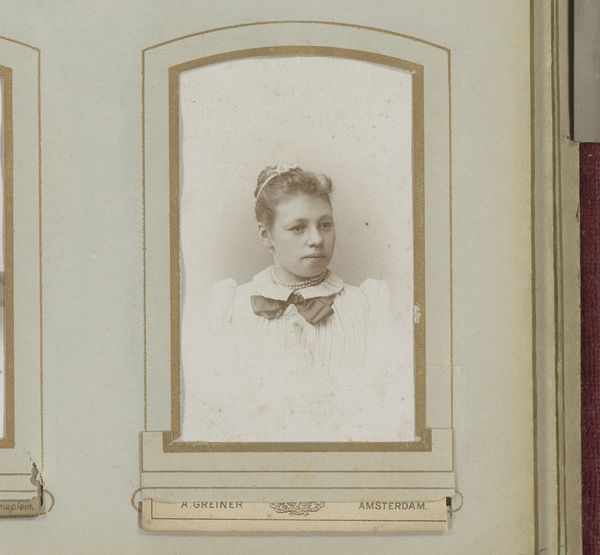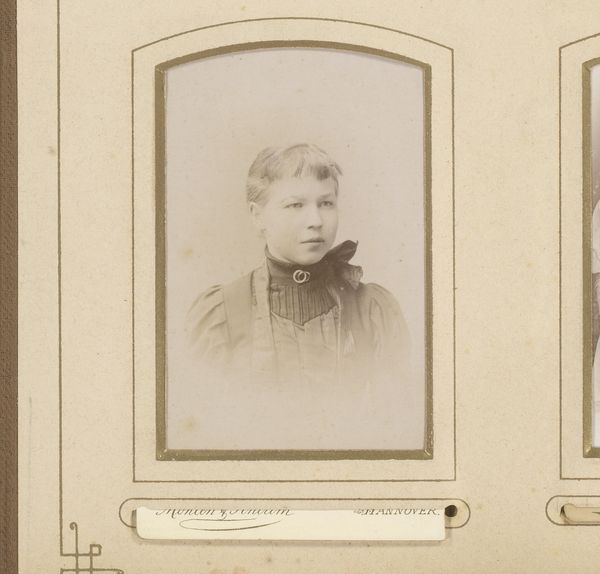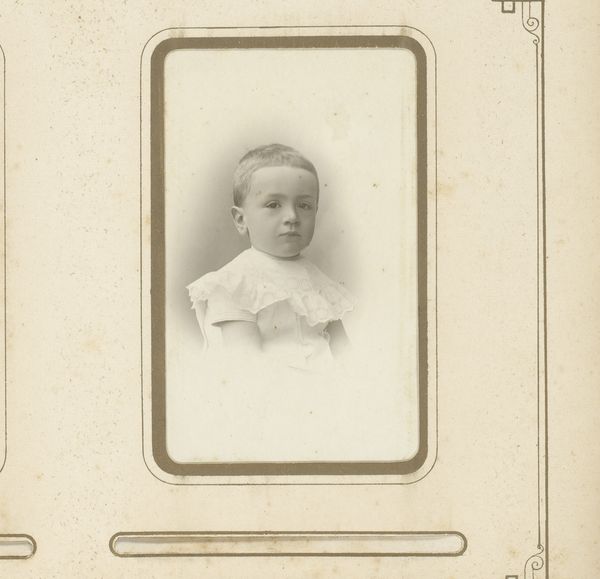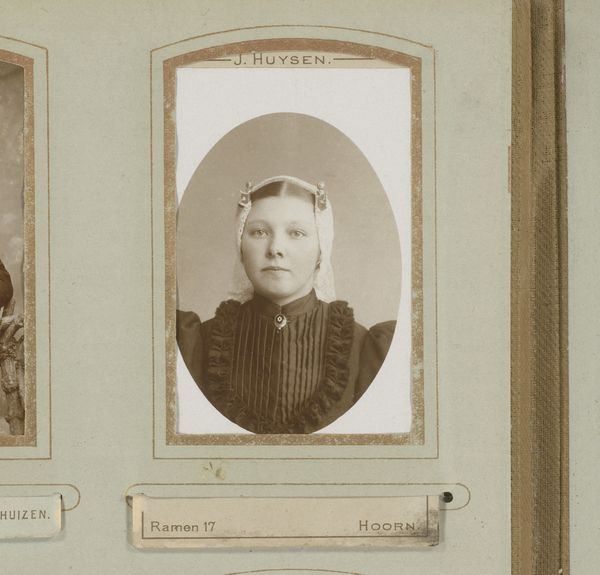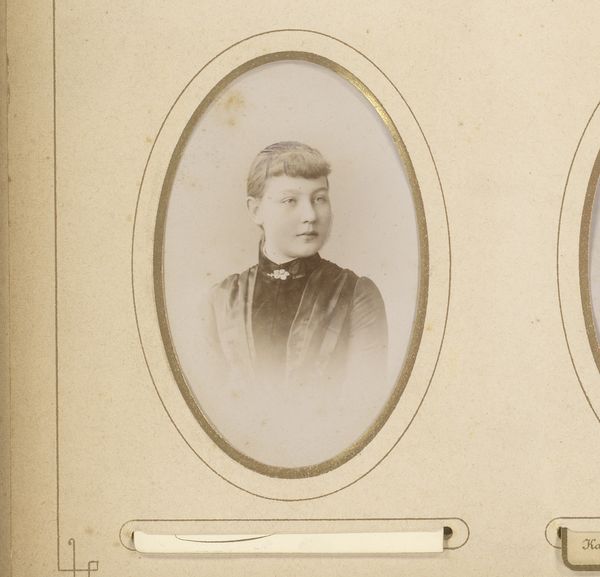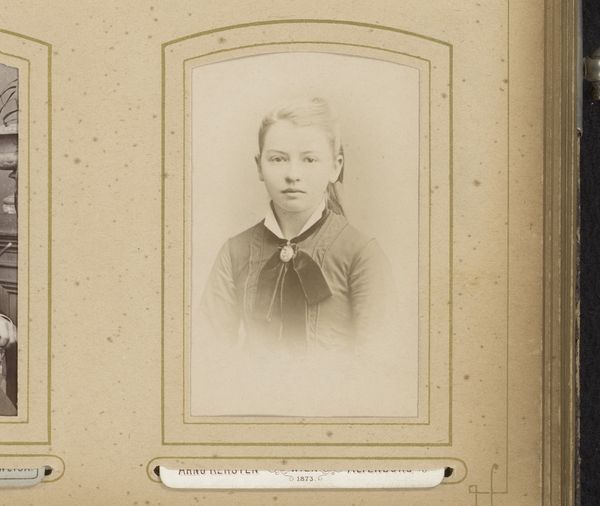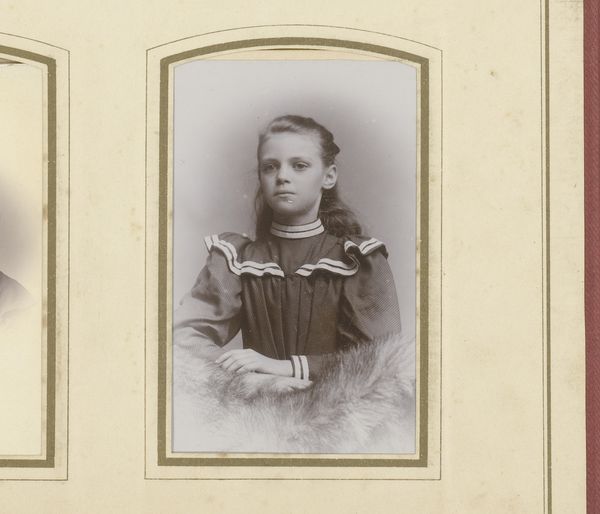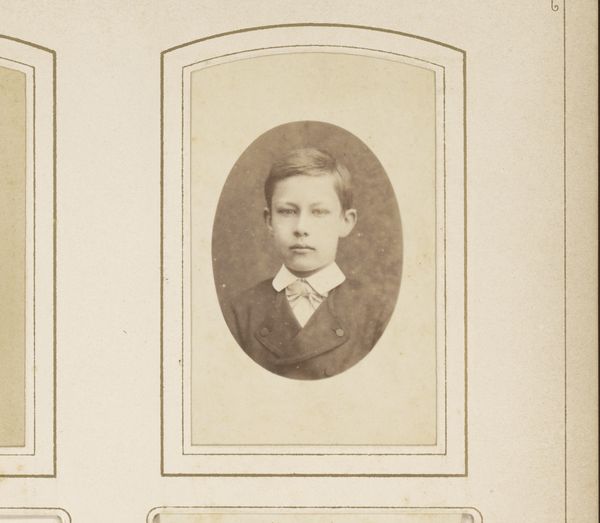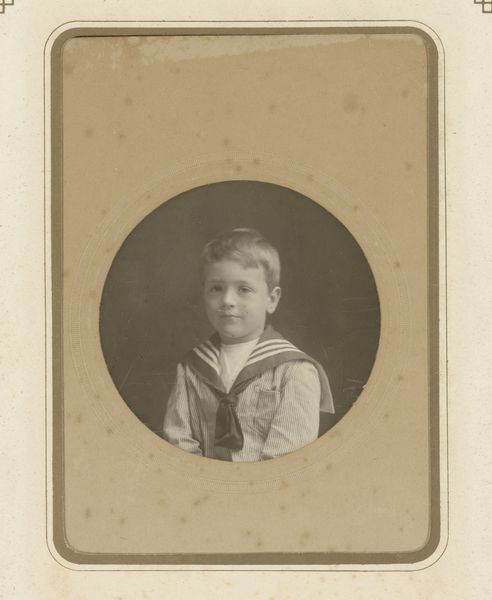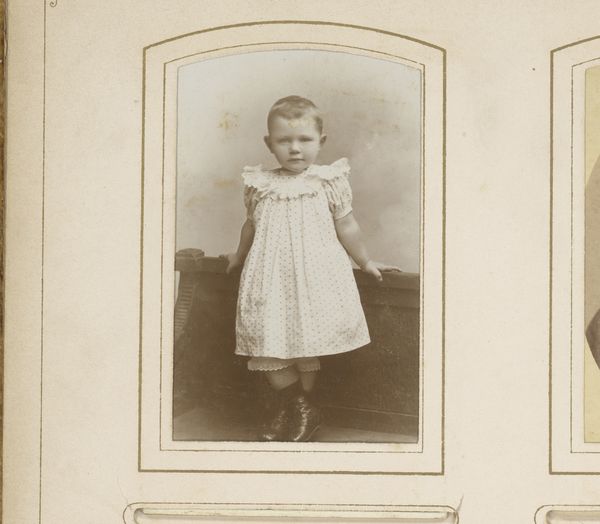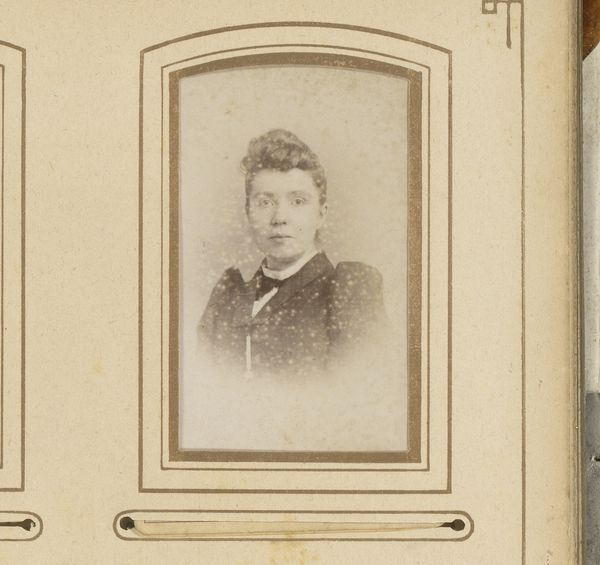
photography
#
beige
#
portrait
#
aged paper
#
toned paper
#
earth tone
#
pictorialism
#
parchment
#
photography
#
nude colour palette
#
brown and beige
#
warm-toned
#
golden font
#
gold element
Dimensions: height 82 mm, width 53 mm
Copyright: Rijks Museum: Open Domain
Editor: So this is "Portret van een Meisje," or "Portrait of a Girl," by August Brockesch, dated somewhere between 1890 and 1910. It's a photograph, and what immediately strikes me is its nostalgic quality. The sepia tones and the girl's somewhat formal attire transport me back to that era. How do you interpret this portrait within its historical context? Curator: Well, it's fascinating how studio portraits like these became accessible to a wider segment of the middle class around the turn of the century. This wasn’t just about capturing likeness; it was about crafting and displaying a certain social identity. Think about it – why did people choose such formal attire? Editor: To present themselves in the best possible light, perhaps? Projecting respectability? Curator: Precisely. And that “best possible light” was heavily influenced by societal expectations and the aspirations of the rising bourgeoisie. Consider also the role of photography studios themselves; they weren't merely places of business but influential cultural institutions, dictating poses, backdrops, even ideal expressions. It's about participating in a system of image-making that reinforces social norms. Does the setting or staging contribute to this reading? Editor: Yes, I can see how the formal frame, and even the faded quality, reinforce that sense of constructed identity and the passage of time. I hadn't considered the photographer's role beyond simply capturing an image. Curator: Exactly! And thinking about the studio's location, Regensburg, perhaps it catered to a specific regional clientele, each with their unique interpretation of modern identity. It encourages questions about who had access to these spaces and whose stories were told… and preserved. Editor: It makes you think about all the untold stories, doesn't it? I'm definitely seeing this picture in a new light now. Curator: Indeed. By considering its socio-political backdrop, this photograph transforms from a simple portrait into a fascinating cultural artifact, echoing broader themes of identity, aspiration, and social change.
Comments
No comments
Be the first to comment and join the conversation on the ultimate creative platform.
